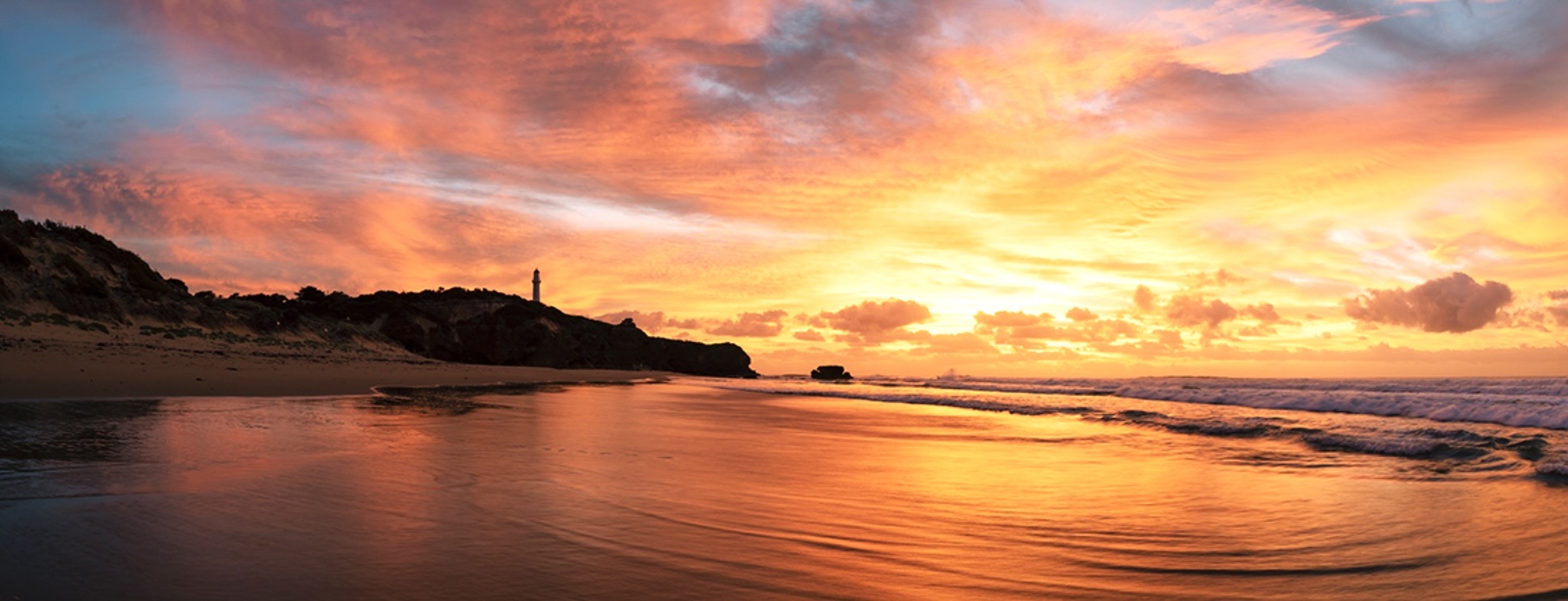
Split Point Lighthouse, affectionately also known as the “White Queen” is perched majestically on the windswept cliffs of Aireys Inlet along Victoria’s Great Ocean Road, stands as a guard over one of Australia’s most treacherous stretches of coastline. This 33m concrete tower, standing 70m above the churning waters of Bass Strait, has guided mariners through the deadly passage between Cape Otway and Port Phillip Bay since it was first lit in 1891.
Originally known as Eagles Nest Point before being renamed Split Point in 1913, this lighthouse commands sweeping views across the notorious “Shipwreck Coast,” where hundreds of vessels have met their doom against hidden reefs, violent swells, and sudden squalls that continue to even test today’s hi-tech navigators.
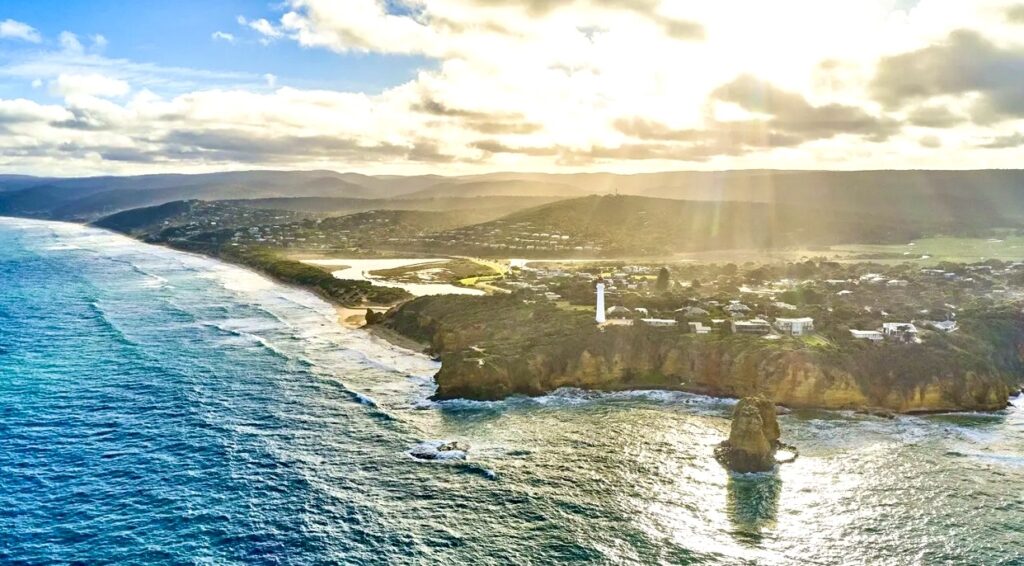
The lighthouse overlooks a dramatic landscape where towering limestone cliffs meet the relentless Southern Ocean, carved by millennia of erosion into sea stacks, blowholes, and hidden coves where treacherous currents and submerged ledges create a maze of hazards for the unwary. Aireys Inlet itself sits at a critical junction along the Bass Strait shipping route where vessels round the cape on route to Melbourne and the east coast have to make critical navigation decisions in waters that have claimed more lives than any other stretch of Australian coastline.
The Wadawurrung people, traditional custodians of the Surf Coast region encompassing Aireys Inlet, have revered this land for millennia as part of their ancestral Country. The area around Aireys Inlet, known to Aboriginal peoples as “Managwhawz,” has been inhabited for thousands of years by the traditional custodians of this coastal region. Their deep understanding of the local environment, tides, and weather patterns was invaluable to early European settlers and explorers. The indigenous peoples maintained spiritual connections to these dramatic cliffs and coastal waters, with traditional knowledge passed down through generations about the dangerous currents and seasonal changes that make these waters so perilous.
In the early 19th century, the area gained notoriety through the remarkable survival story of William Buckley, an escaped convict who lived among the Aboriginal peoples for over three decades.
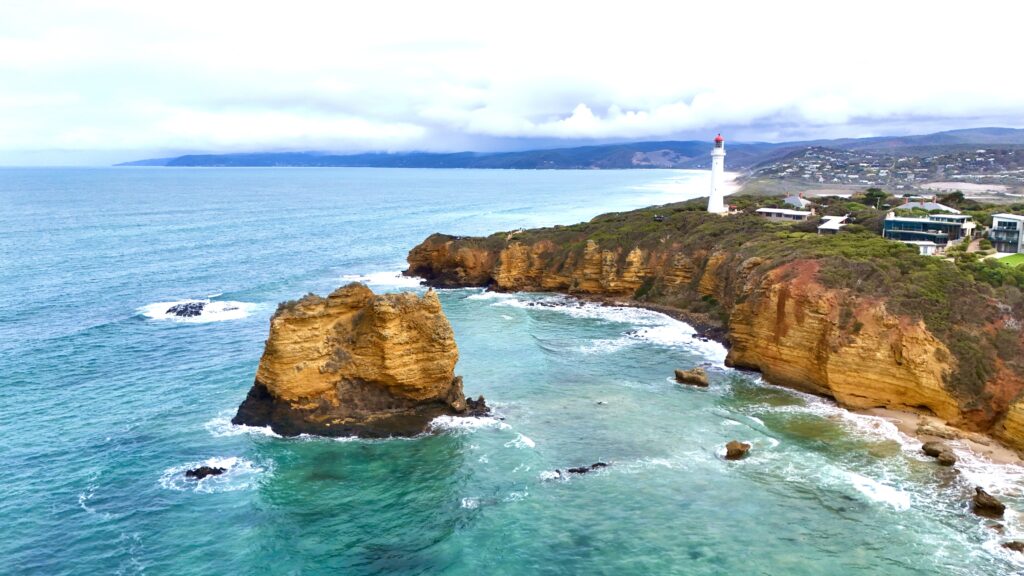
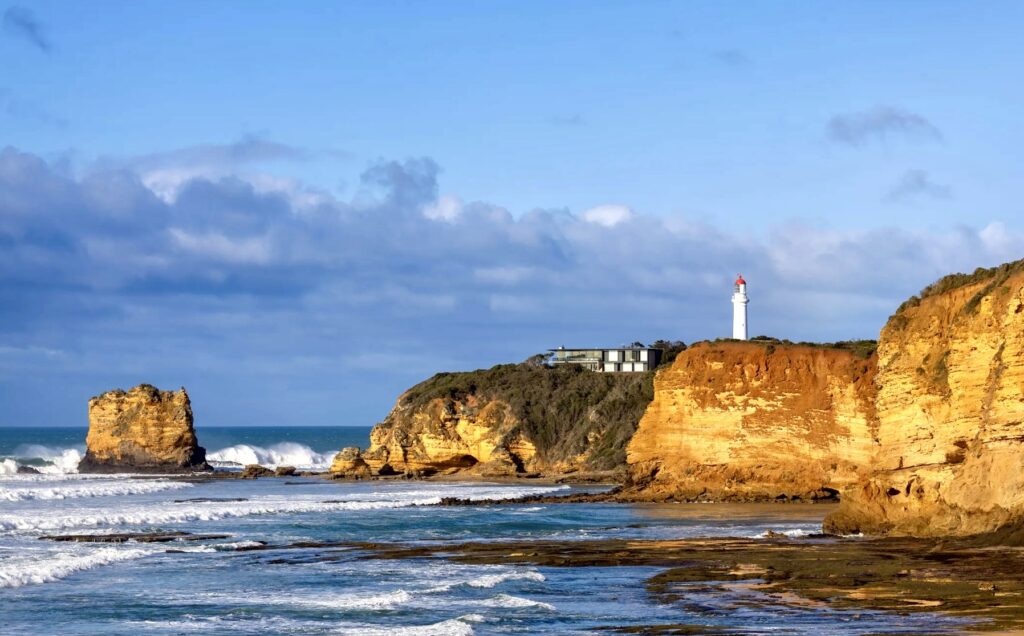
The construction of Split Point Lighthouse was in response to the mounting toll of maritime disasters along Victoria’s coast. There was a total of 638 known shipwrecks along this stretch of coast prior to lighthouses being posted on its shores; thus earning it the nickname, “The Shipwreck Coast.” The waters around Aireys Inlet became particularly infamous following several devastating wrecks in the mid-19th century.
The Marie Gabrielle’s loss in 1869 near Aireys Inlet was among the tragedies that highlighted the urgent need for navigational aids along this deadly stretch. The absence of warning lights left mariners to navigate by dead reckoning through fog-shrouded reefs and unpredictable currents, with catastrophic results becoming increasingly common as gold rush traffic intensified through Bass Strait.
Local shipping agents, survivors of wrecks, and colonial authorities recognised that without adequate lighthouse coverage between Cape Otway and Port Phillip Bay, the mounting death toll would continue. The strategic positioning of a lighthouse at Aireys Inlet would fill a critical gap in the coastal warning system, providing mariners with essential bearings as they navigated the treacherous passage.
Following numerous shipwrecks a 6.3 hectare lighthouse reserve was gazetted in 1890 and construction commenced in 1890 following tenders awarded to R. Anderson & Sons of Richmond, with the project overseen by the Victorian Public Works Department. The site posed logistical hurdles, an exposed clifftop battered by winds, with materials hauled from local quarries at Lookout Hill and transported via rough tracks through the bush. The tapered cylindrical tower was built from concrete rubble, rendered smooth and painted white, topped by a Chance Brothers lantern house imported from Birmingham, England. The lighthouse’s unique concrete construction distinguished it from the sandstone towers found elsewhere along the coast. The tower has an impressive cast iron spiral staircase and the landings at each level are supported by columns with unusually elaborate capitals. An unusual feature of the tower is the entrance room at its base. The design of the lighthouse resembles a chimney to promote airflow, reflecting an innovative engineering approach to maintaining ventilation. Ancillary structures included weatherboard keepers’ cottages and stables were all completed by September 1891
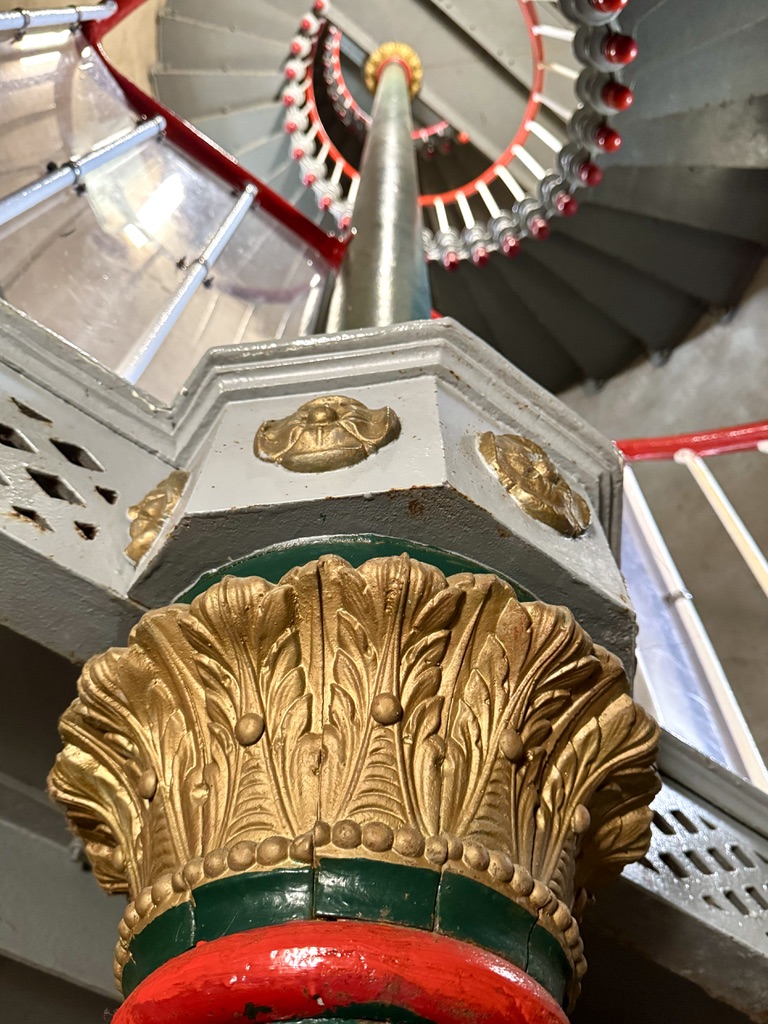
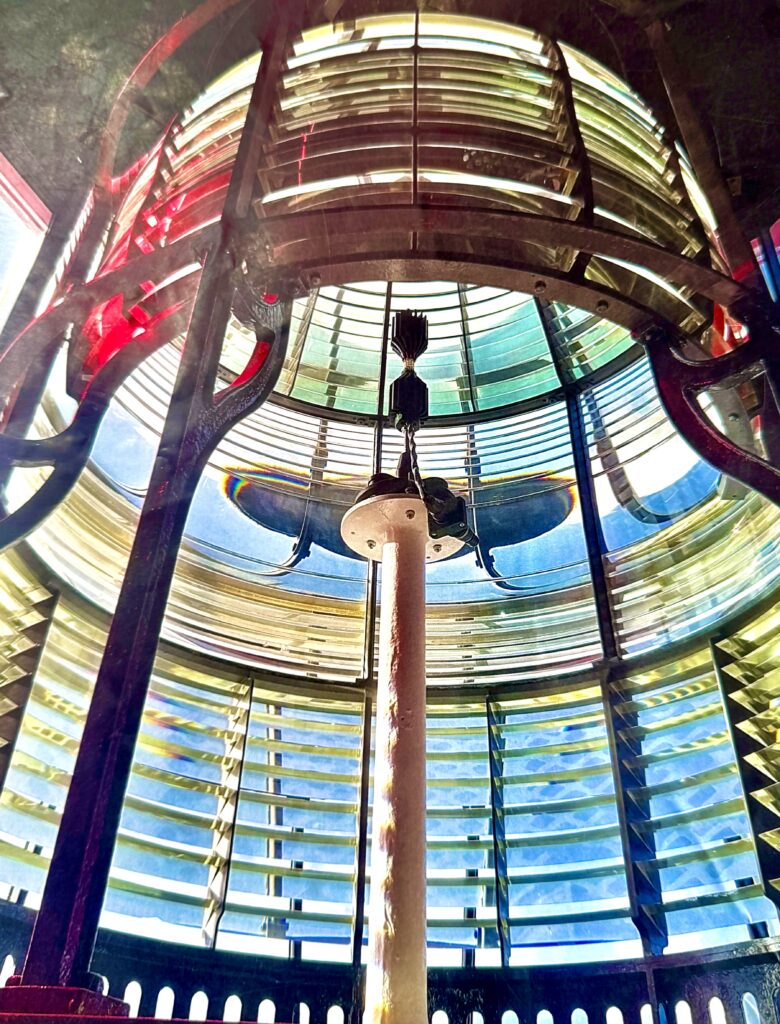
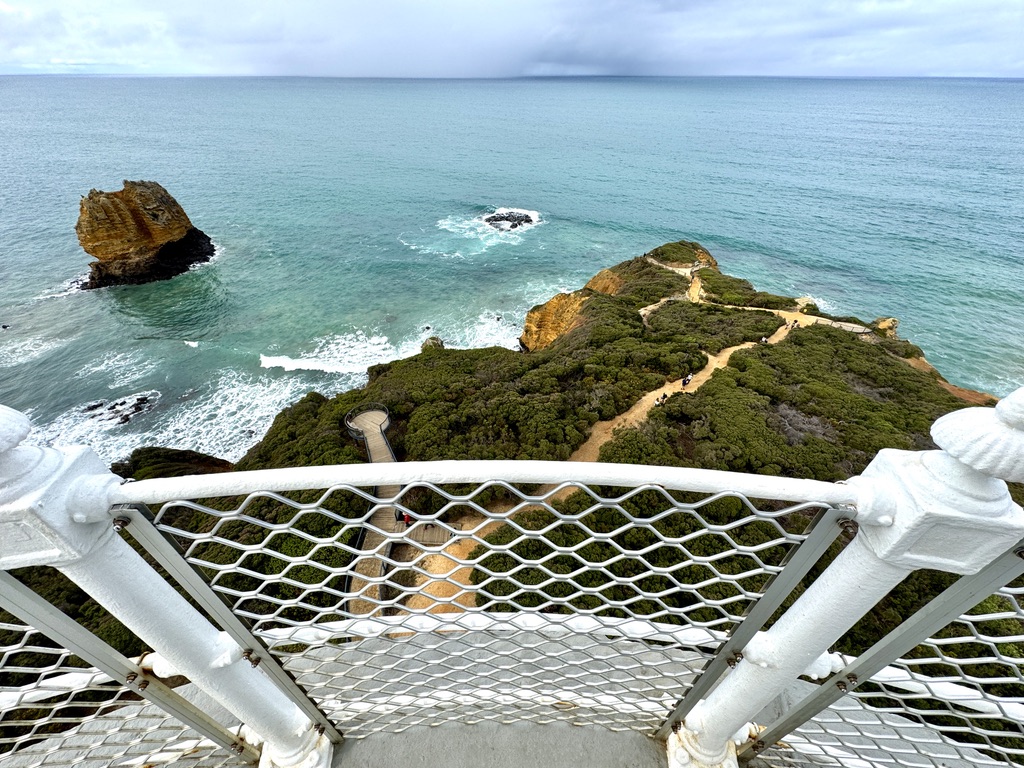
The lighthouse was first illuminated in late 1891, its powerful beam capable of being seen from 32 kilometres away, providing crucial guidance for ships navigating Bass Strait’s treacherous waters.
Split Point Lighthouse first illuminated on September 1, 1891, its first-order Fresnel lens casting a fixed red light visible up to 18 nautical miles, later augmented by sectors for safer guidance.
For 27 years, three lighthouse keepers worked at this remote location, ensuring the light was operating well and communicating with passing ships. The isolation at Split Point, while not as extreme as Cape Otway, still presented significant challenges for the keeper families who maintained the light and associated buildings.
The keepers maintained detailed logbooks recording weather conditions, shipping movements, and the constant maintenance required to keep the light operational. They manually operated the kerosene-powered beacon, trimming wicks, cleaning lenses, and ensuring the light’s reliability during storms when ships most desperately needed guidance. Communication with passing vessels was maintained through various code systems, allowing keepers to relay weather warnings and navigation information.
The lighthouse complex included quarters for the keepers and their families, creating a small isolated community perched on the cliff edge. Supplies arrived irregularly, and medical emergencies required long journeys making self-sufficiency essential.
Like many isolated lighthouses along this haunted coastline, Split Point has acquired the subject of local ghost stories and maritime legends. The combination of its dramatic clifftop setting, the countless tragedies that unfolded in the waters below, and the isolation experienced by generations of keepers has fostered an atmosphere ripe for supernatural occurrences.
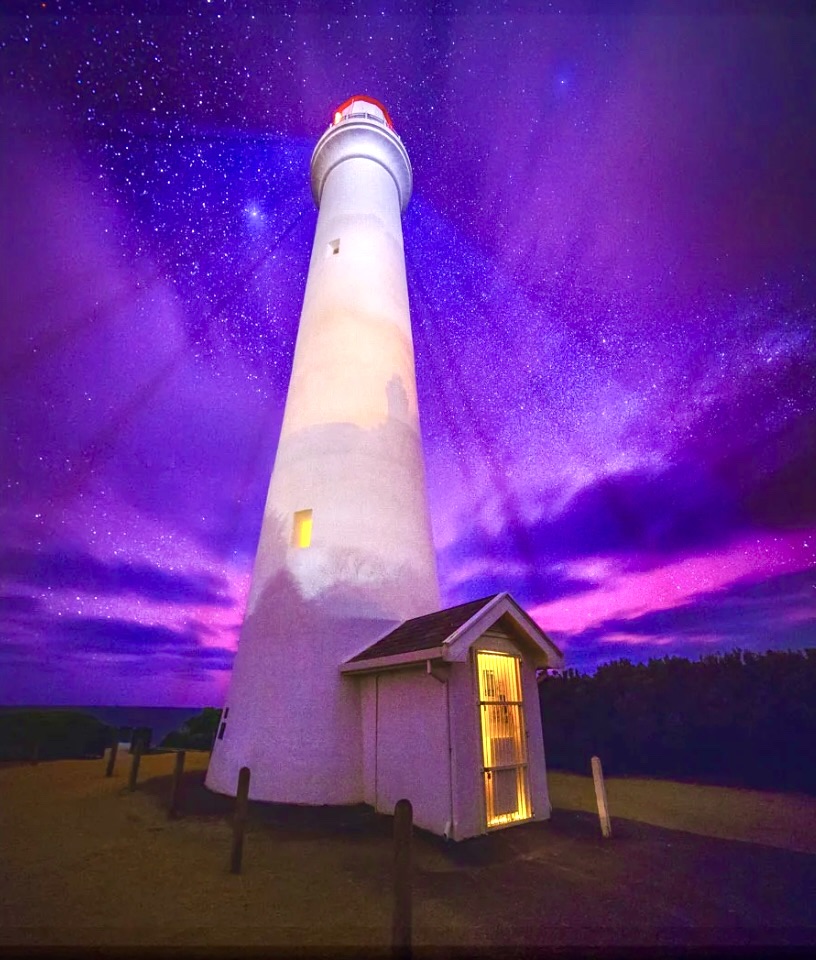
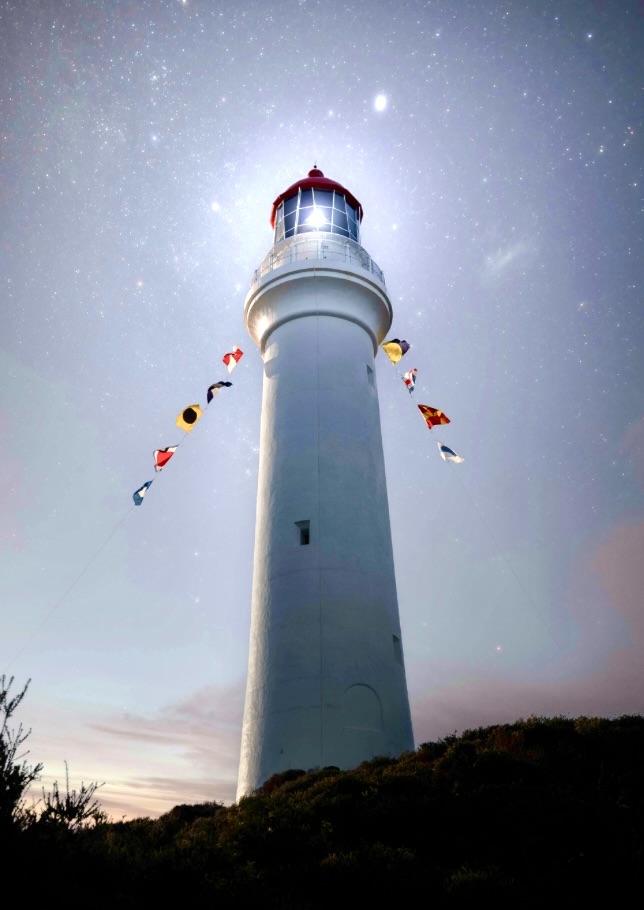
Visitors and maintenance crews have reported unexplained phenomena within the tower, including footsteps echoing up the spiral staircase when no one is present, and strange lights appearing in the lantern room during periods when the automated system is inactive. The lighthouse’s proximity to numerous shipwreck sites may contribute to these experiences, as the spirits of those lost at sea are said to still seek the safety of the light that might have saved them.
One of the more chilling stories are of a spectral teenage girl haunting the rocks below, said to be the spirit of a lighthouse resident’s daughter murdered by her father in the early 1900s after revealing a pregnancy. Her apparition, clad in period attire, emerges from the waves during storms, luring young men to join her in the depths, seeking companionship for her unrest. Families whispered of invisible presences during gales, and children claimed playmates from “the sea” who foretold weather changes. The lighthouse gained cultural fame as the setting for the supernatural children’s series “Round the Twist,” where ghostly adventures unfolded, blurring fiction with local lore.
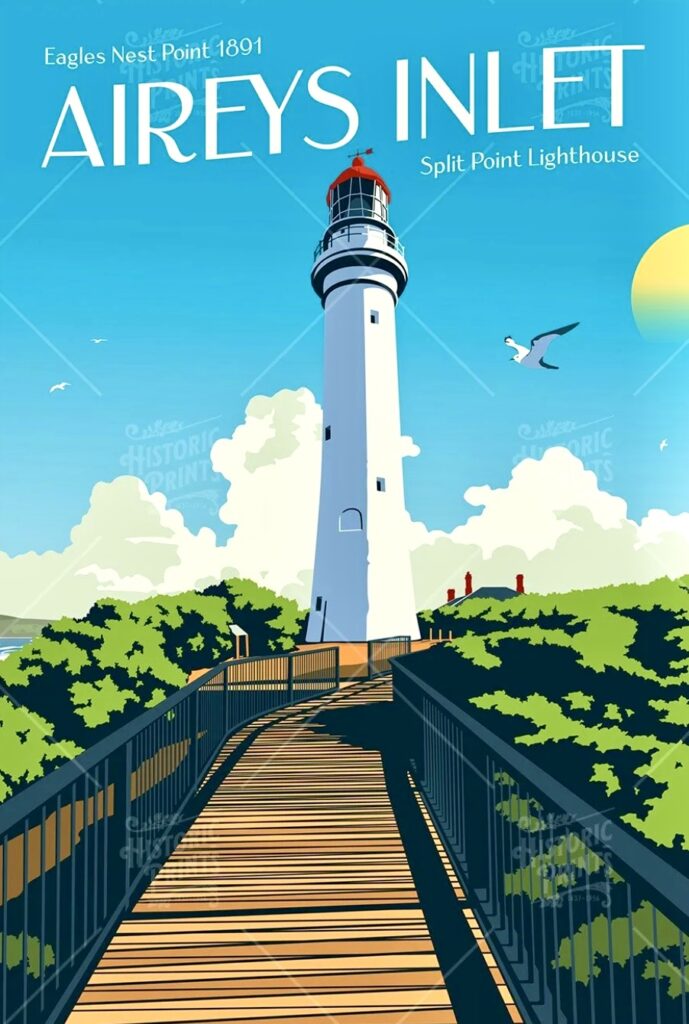

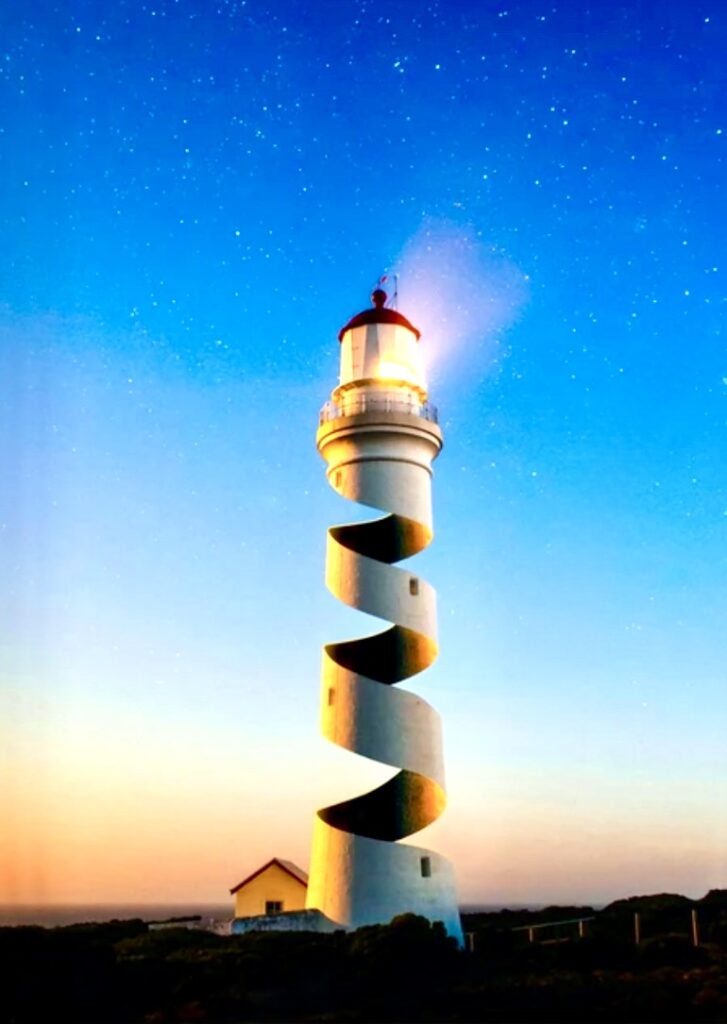
Automation arrived in 1919 with acetylene gas, reducing staff, and full electrification in 1972 ended manned operations. Phenomena reportedly intensified pre-automation, with lights flickering in patterns resembling distress signals. Today, maintenance crews still note equipment anomalies, like radios emitting faint cries or tools shifting positions, while fishermen avoid the headland on wreck anniversaries, reporting underwater glows tracing phantom hulls.
The lighthouse serves as both an active navigation aid and a monument to Victoria’s maritime heritage, offering visitors insight into the dangers that early mariners faced and the vital role these lighthouses played in saving countless lives. Its position along the Great Ocean Road makes it easily accessible to tourists, while its continuing operation maintains its original purpose of guiding vessels safely through Bass Strait.
Split Point Lighthouse stands as a testament to human ingenuity in the face of nature’s dangers, a concrete guardian that has watched over the treacherous Shipwreck Coast for over 130 years, continuing to serve both the maritime community and those who come to appreciate Victoria’s dramatic coastal heritage.
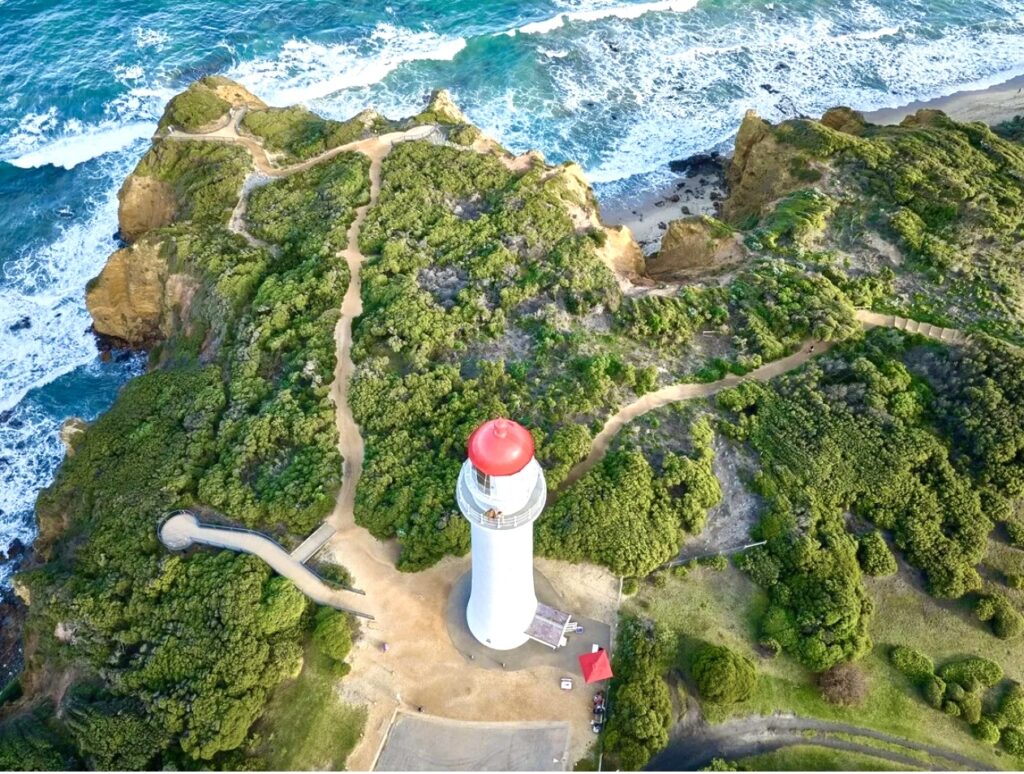
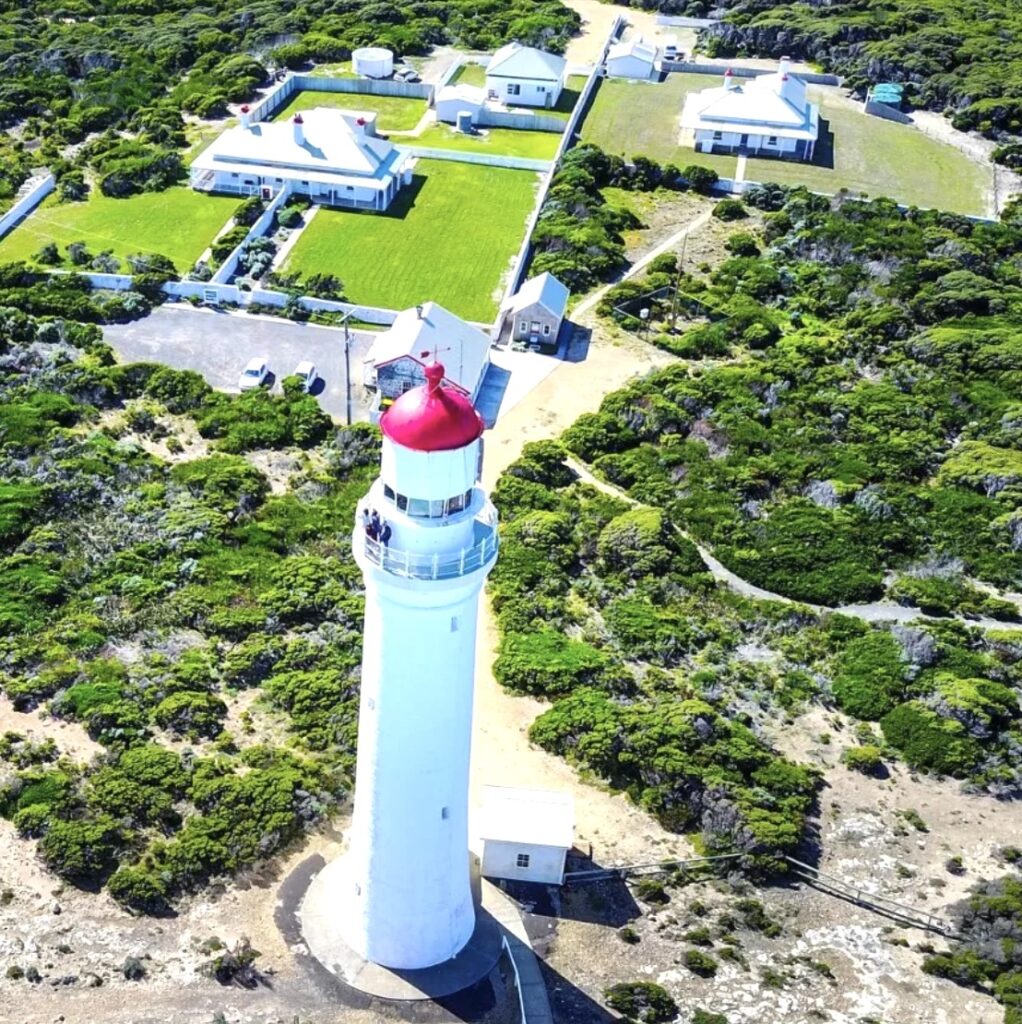
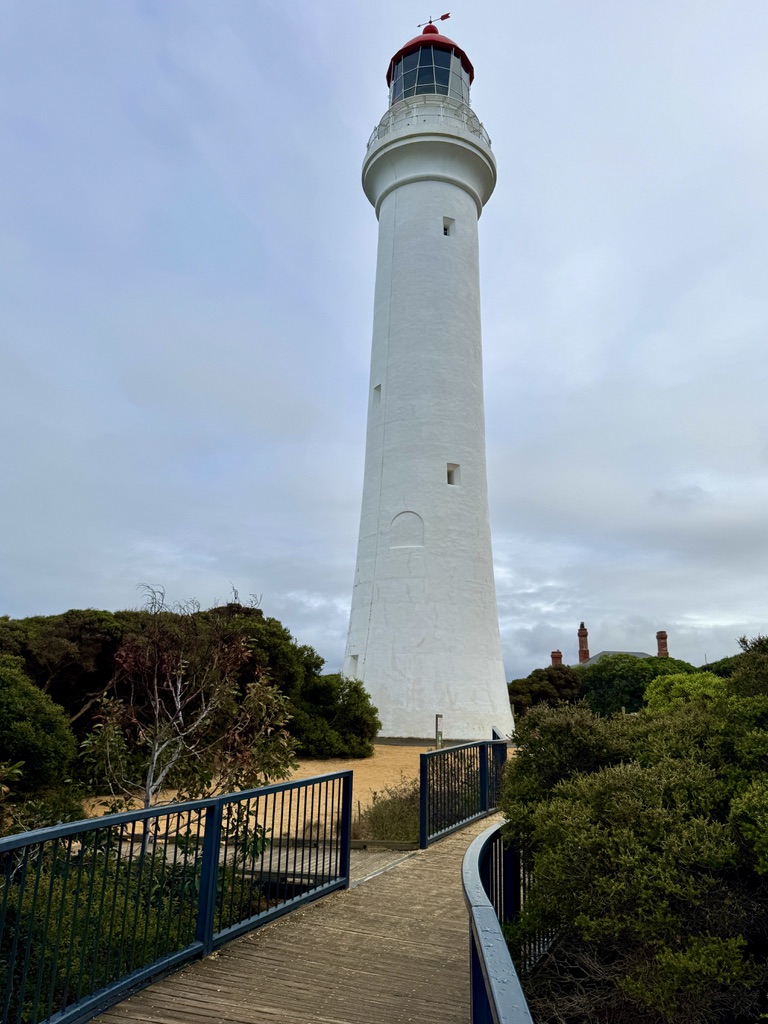
Technical Specifications
- First Exhibited: Late 1891
- Status: Active (automated)
- Location: Federal Street, Aireys Inlet, Great Ocean Road, Victoria, Australia
- Construction: 1890-1891, concrete tower
- Tower Height: 33.5 metres
- Focal Elevation: 70 metres above sea level
- Original Name: Eagles Nest Point (renamed Split Point in 1913)
- Range: Visible from 32 kilometres away
- Design: Concrete tower with chimney-like design for airflow
- Interior Features: Cast iron spiral staircase with elaborate capitals, entrance room at base
- Current Operator: Automated system
- Heritage Status: Listed on Victorian Heritage Register